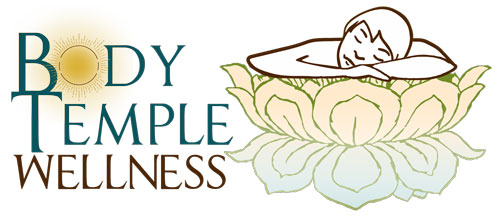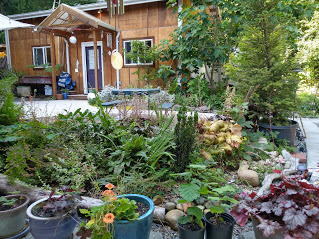#BrooksRunning, #lordhill, #regularmassage, #relaxsoremuscles, #snohomishmassage, #Snohomishrunners, Blog, Plantarfasciitis
Snohomish Runners, Prepare Yourself
It’s that time of year when Snohomish runners are taking to the paths, streets and trails. Some of you will be doing marathons, others will be doing 5Ks while others will be going out for a brisk run after dinner. Either way, now is the time to make sure you are taking the steps to protect yourself from injury and to work towards peak performance.
Let me start by saying that I am not much of a runner but I do understand body mechanics, anatomy and how to prevent injury. I get a fair amount of runners in my practice and there are some things that are common among them. This is no coincidence.
Surfaces
The surface you run on matters. Different surfaces present different challenges. In this post, I will only address a couple of the most common issues. If you run on trails, which is my personal favorite, especially if they are near the ocean, you need to strengthen muscles that might not otherwise be as critical. Trail running requires good balance and the ability to run on uneven surfaces. Snohomish runners who frequent Lord’s Hill Park know what I am talking about! Running downhill is even tougher on your body because it requires you to endure a lot of pounding. Add a slightly turned ankle to the equation and you could have a really bad injury. So how do you prepare?
Trail Running
For trail running, jump training (also called plyometrics) is a great way to get your body used to exercises where muscles exert maximum force in short intervals of time, with the goal of increasing power or speed-strength. This also prepares you for the feeling of pounding. It can teach you to land lightly on your feet. It can strengthen muscles that may not normally be used in this way and increase balance. This makes you sturdier and safer on the trail.
Here is one way to do some jump training. Stand on a box with your knees slightly bent. Step off the box and land with both feet on the ground. Try to land as softly as possible, think ninja, by bending your knees slightly upon hitting the floor. That is one rep. Step back up on the box and repeat. Aim for three to five perfect reps before resting and repeating the set. For those without a box, jumping rope and single let hops on the ground can present a similar challenge. For both, focus on staying light on your feet. Again, think ninja. Try to land as softly as possible.
Now work on your balance, more specifically. Switching to barefoot exercises in the gym, or wherever, offers a chance to work the stabilizer muscles in your feet and ankles which bolsters your protection system. Start by going shoeless on bodyweight moves like squats, lunges, and push-ups. Then, you can move to harder variations like single-leg squats, rear-foot elevated lunges, and even plyometrics, barefoot.
If you have been a road runner and now you want to trail run, make the transition slowly. Run a bit on the road and a bit on the grass so that you can start getting used to it before you really go for it. This can help your balance and footing be more stable.
Hard Surfaces
Road or hard surface running has its own issues. People who run on surfaces like pavement tend to develop shin splints and plantar fasciitis more often. Hard surfaces can also be hard for people with joint issues, like pain in the knee. This doesn’t always happen but it is not uncommon. Both of these conditions are super painful, can burn like heck and prevent you from even walking across a room. To avoid them, warm up thoroughly. This means physically warming the tissues of the legs and glutes. Some people can do this by walking gently for a while, until you feel warmth in the legs. There are a lot of variables here, including the climate and what type of running so use your best judgement. Some folks use heated seats in their cars as part of a warm up (you should still walk). Tiger balm can be added to assist with blood flow, which helps to warm areas. You can also use other mechanical ways to heat your legs like warm water bottles. Also, follow the instructions to below.
Prepare for Running
- Do dynamic stretches. Static stretching, where you hold a muscle in an elongated, fixed position for 30 seconds or more, is now discouraged prerun, as it’s been linked to injury. Make sure you thoroughly stretch the muscles in your thighs and calves.
- Cool down after running. Incorporate stretches into your cool-down routine.
- Drink plenty of water before, during and after your run.
- Don’t push too hard beyond your current level of fitness. Plan to gradually increase how long and how often you run over a few months.
- Start slowly at a pace at which you can have a conversation without breathlessness.
- During summer, avoid running during the hottest part of the day. Plan to run during the morning or evening.
- Wear layers of clothing on your upper body to avoid overheating.
- Consider having regular professional massage to relax tight, sore muscles.
- Avoid running near roads. Inhaling vehicle exhaust fumes can cause a range of breathing-related (respiratory) problems.
- Wear good shoes that fit properly. Replace your shoes before they are worn out.
I hope these tips are helpful to you. Feel free to add your ideas in the comments below. I am sure other folks can make useful suggestions that can benefit others. If you are interested in receiving massage to relax sore or tight muscles, you can schedule with me online. Please wait for the confirmation email. Check your spam box if you don’t see it arrive within 24 hours. Have a fantastic running season.









Leave a reply